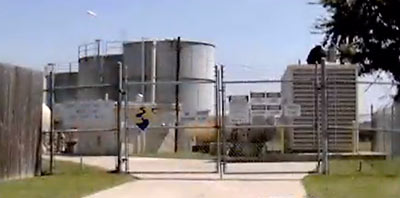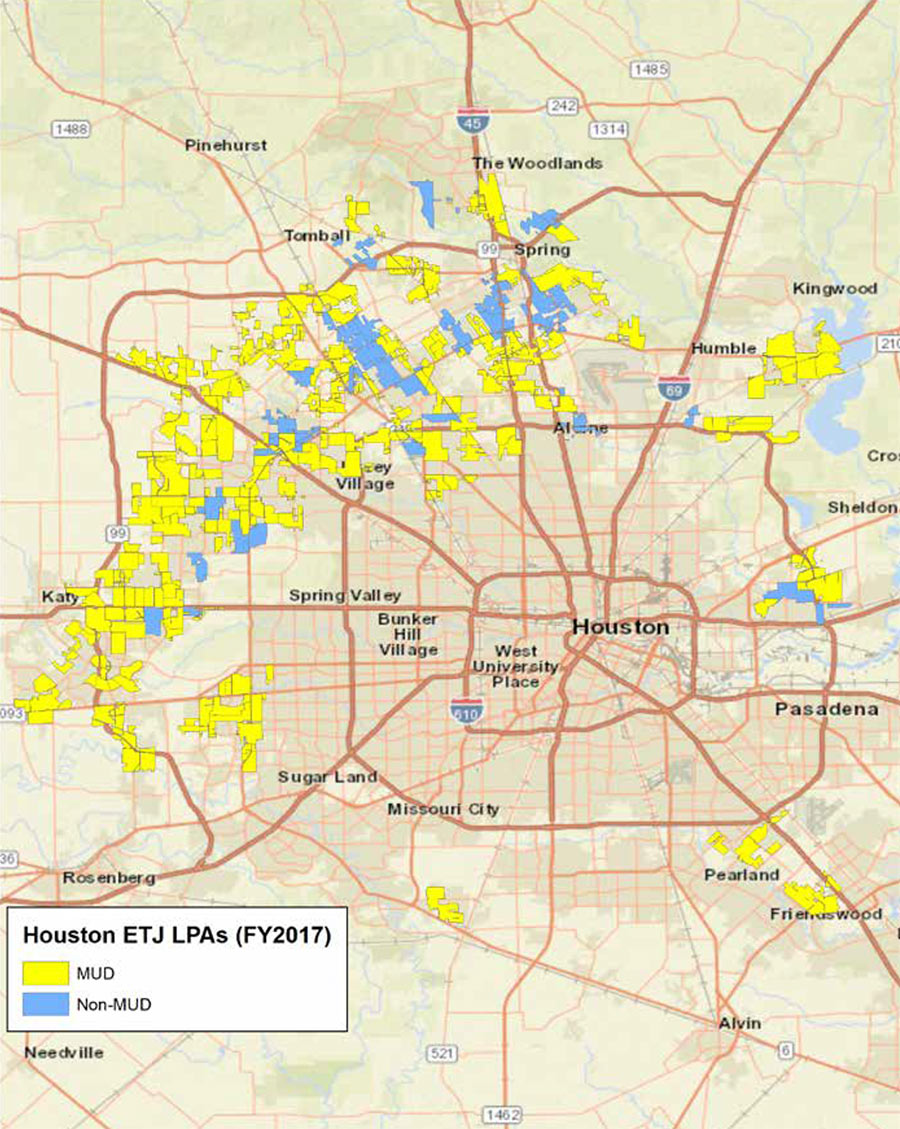
Since 1995, a new kind of land designation has been cropping up all along Houston’s outskirts: the LPA, or limited-purpose annexation. It’s a way for the city to collect sales tax in small, usually commercial, portions of unincorporated areas without formally annexing them or providing them with city services. Often LPAs are established inside an existing MUD (as shown above in yellow), although they doesn’t have to be (as shown by the blue). “The pursuit of these agreements is often framed by the city as a commuter tax,” according to a recent report from Rice’s Kinder Institute, “aimed at collecting revenue from residents who live outside of Houston but who use the services provided by the city.”
But there’s another reason why more than 200 LPAs now encircle the city, mainly between Hwy. 6 and the Grand Pkwy. Last year, the Texas legislature passed a bill that limits cities’ annexation power by allowing the communities they want to annex to hold their own referenda before their extra-territorial turf can be snatched up. One exception: A referendum isn’t necessary if the city and the area to be annexed have a preexisting agreement that says so. Many of Houston’s LPAs include this carve-out, meaning that when they expire — the typical term is 30 years — the areas they regulate will be up for grabs by the city . . . no local vote needed.


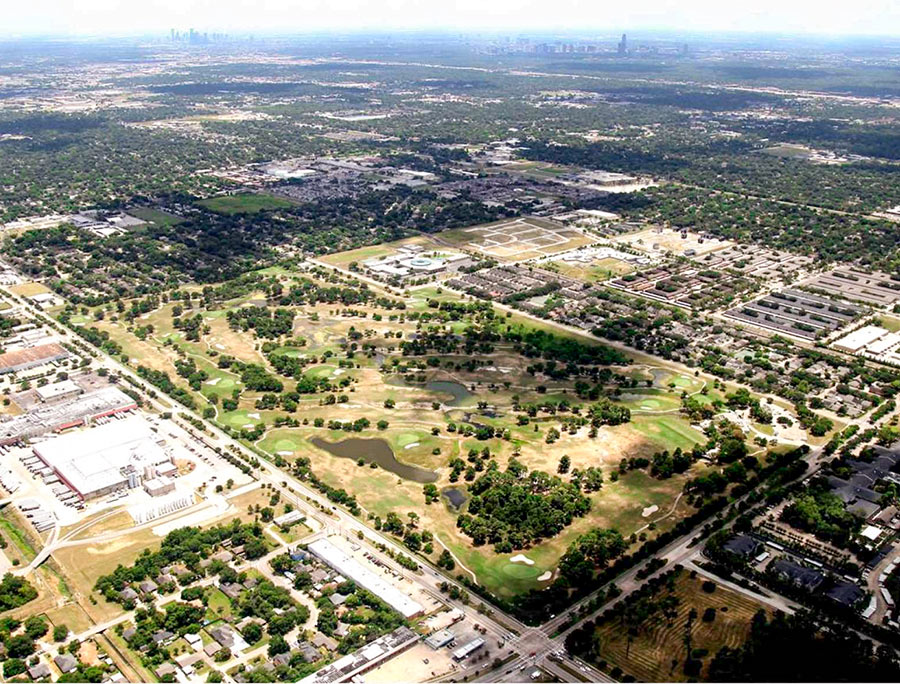 Houston’s city council voted today to approve a proposal to create a municipal utility district for an 800-house development Meritage Homes wants to build on the former Pine Crest Golf Course.
Houston’s city council voted today to approve a proposal to create a municipal utility district for an 800-house development Meritage Homes wants to build on the former Pine Crest Golf Course. 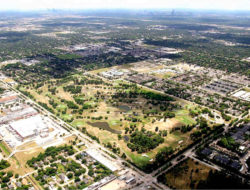 Tomorrow City Council is scheduled to approve a new municipal utility district for a proposed development on the Pine Crest Golf Course at Gessner and Clay Rd. in Spring Branch that would include enough new homes to house 800 residents. MetroNational is
Tomorrow City Council is scheduled to approve a new municipal utility district for a proposed development on the Pine Crest Golf Course at Gessner and Clay Rd. in Spring Branch that would include enough new homes to house 800 residents. MetroNational is 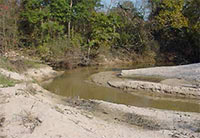 A $58 million bond measure to reimburse developer DR Horton for utility and road construction on 400 soon-to-be-developed acres just south of The Woodlands and east of Gosling Rd. is expected to pass in today’s election by a mere 2 votes. The couple expected to account for the winning margin just moved into the area in a trailer they’ve parked in a clearing. And, yeah, they’ll be the only people allowed to vote on the measure. Does this sound like a strange picture in an elective democracy?
A $58 million bond measure to reimburse developer DR Horton for utility and road construction on 400 soon-to-be-developed acres just south of The Woodlands and east of Gosling Rd. is expected to pass in today’s election by a mere 2 votes. The couple expected to account for the winning margin just moved into the area in a trailer they’ve parked in a clearing. And, yeah, they’ll be the only people allowed to vote on the measure. Does this sound like a strange picture in an elective democracy? 